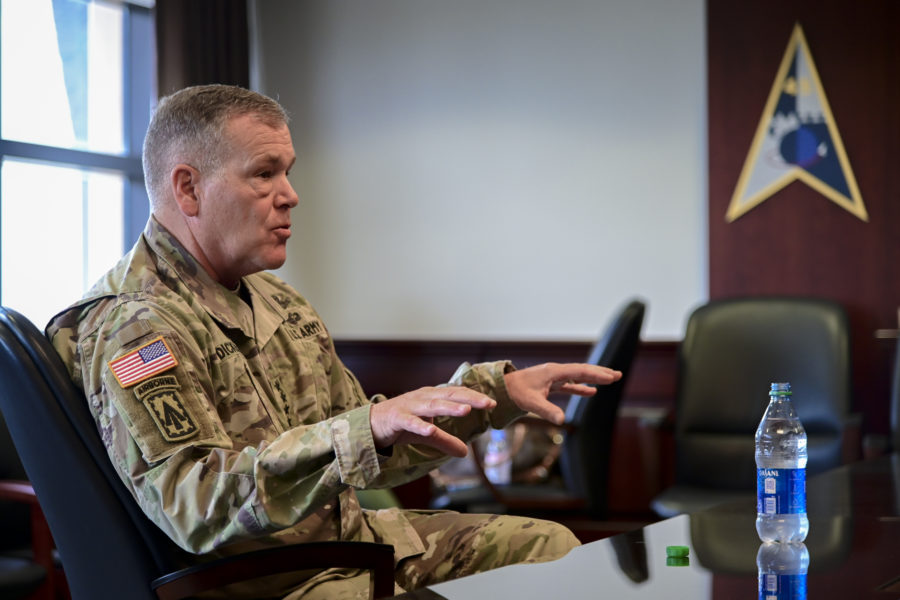U.S. Space Command is “making good progress” toward its goals to network the Defense Department’s space-based missile defense and other sensors and to transform single-purpose satellites to do more than one job, Army Gen. James H. Dickinson said Nov. 29.
The command’s leader since August 2020, Dickinson spoke during a webinar hosted by the Mitchell Institute for Aerospace Studies. He described the command’s priority as “to preserve freedom of access to, and freedom of action in, space. This is the priority of all joint and combined military space forces” such as the unified combatant command reestablished in 2019.
Dickinson also serves as the DOD’s global sensor manager, he said, “able to kind of orchestrate … and synchronize” any efforts to network them together.
Taking into account the “speed of competition with China and Russia,” Dickinson said planning to incorporate new systems even five years down the road is too long. “So today I’m looking for what is good enough today that I can use right now. How can we get the most out of what we have today?”
Dickinson has promoted the concepts of space domain awareness and, more recently, space superiority. Space domain awareness, he says, furthers the conventional practice of tracking and identifying objects in space to also explore “the why” of activities taking place in Earth’s orbit.
The even newer concept of space superiority, in turn, represents “a condition where we’ve secured freedom of action in the domain while denying … freedom of action to the adversary.” It also “requires coordinated offensive and defensive operations,” Dickinson added, and space domain awareness is “a critical requirement” of it.
Missile defense—such as detecting North Korean launches with “as much warning as possible”—makes up one mission area in which Dickinson wants to unite DOD, interagency, and even commercial satellites “into an integrated sensor network.”
He characterized such a network as a “battle management system” to “link operational- and tactical-level planners, allowing them to choose the right platform to deliver the right effects at the right time” and to “shrink the kill web—to understand more fully and decide more quickly with confidence.”
Dickinson predicted that handing off the responsibility for space traffic management will help to free up people in the command to focus on improving space domain awareness. The Commerce Department is in the process of taking over the duties of notifying the world’s space operators when their satellites are in danger of colliding with other spacecraft or orbital debris.
U.S. Space Command is also exploring how to do more with individual satellites, Dickinson said, and he cited the Missile Defense Agency as having “done work in terms of looking at sensors that do solely missile defense, but how could they do space domain awareness, for example? … A lot of times people say, ‘Well, it was never designed to do space domain awareness.’ But it has the ability to do so, and so we are … actively pursuing that.”
The solutions in these cases amount to “software-type capabilities,” Dickinson said.
“We’ve got some more work to do, but we’re making good progress.”
